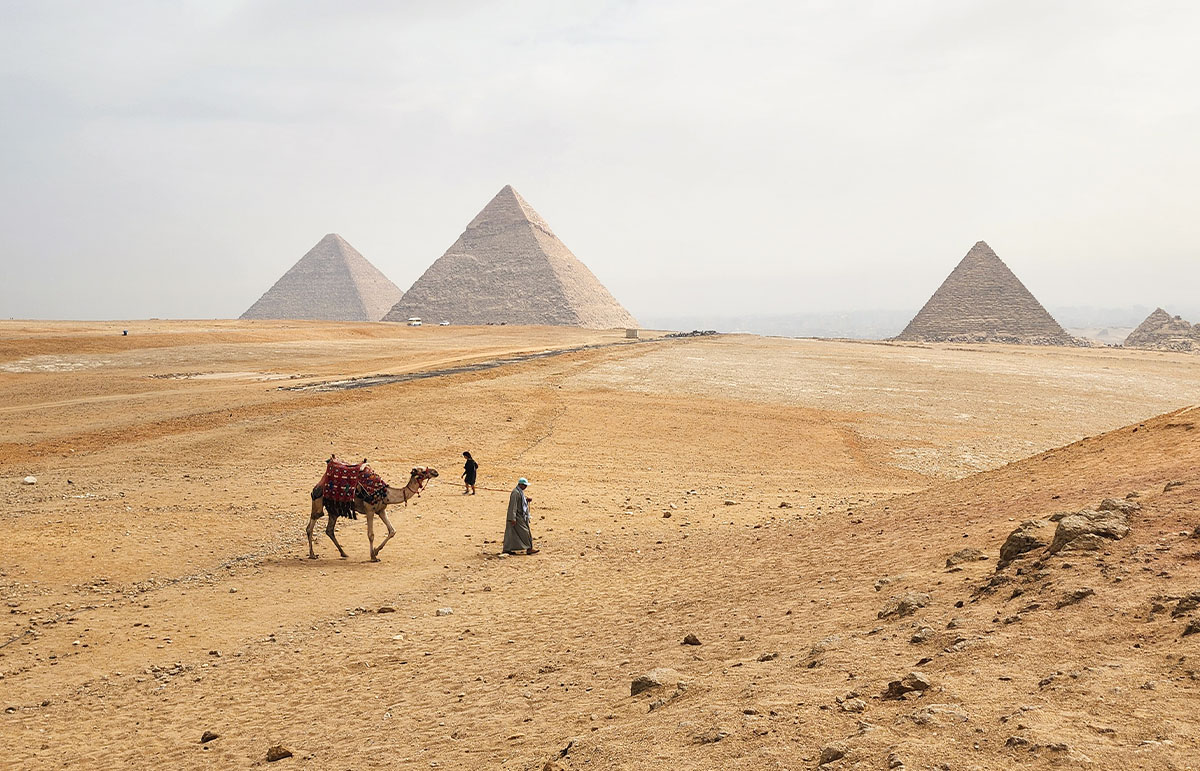
Pyramids of Giza (Photo: Aaron Putze/Iowa Soybean Association)
Training, education boost soy demand in Egypt
May 5, 2023 | Aaron Putze, APR
Give the people of a country a fish, and they’ll eat for a day. Teach them how to produce fish (and poultry and milk), and they’ll eat for a lifetime.
Providing training and education to people in developing countries is a hallmark of the soybean checkoff. In addition to boosting food quality and quantity, the outreach and networking create more demand for U.S. soybeans.
Nowhere is this more evident than Soy Excellence Centers (SEC) developed and implemented by the U.S. Soybean Export Council (USSEC).
With funding provided by the Iowa Soybean Association (ISA) and other state soybean organizations, the professional development program is organizing and engaging a global network of tomorrow’s soy leaders across the globe.
ISA President Randy Miller and President-elect Suzanne Shirbroun saw their impact first-hand during a recent visit to Egypt. In addition to meeting with soybean buyers and processors, they participated in graduation ceremonies recognizing dozens of SEC participants for completing week-long fish and dairy production training.
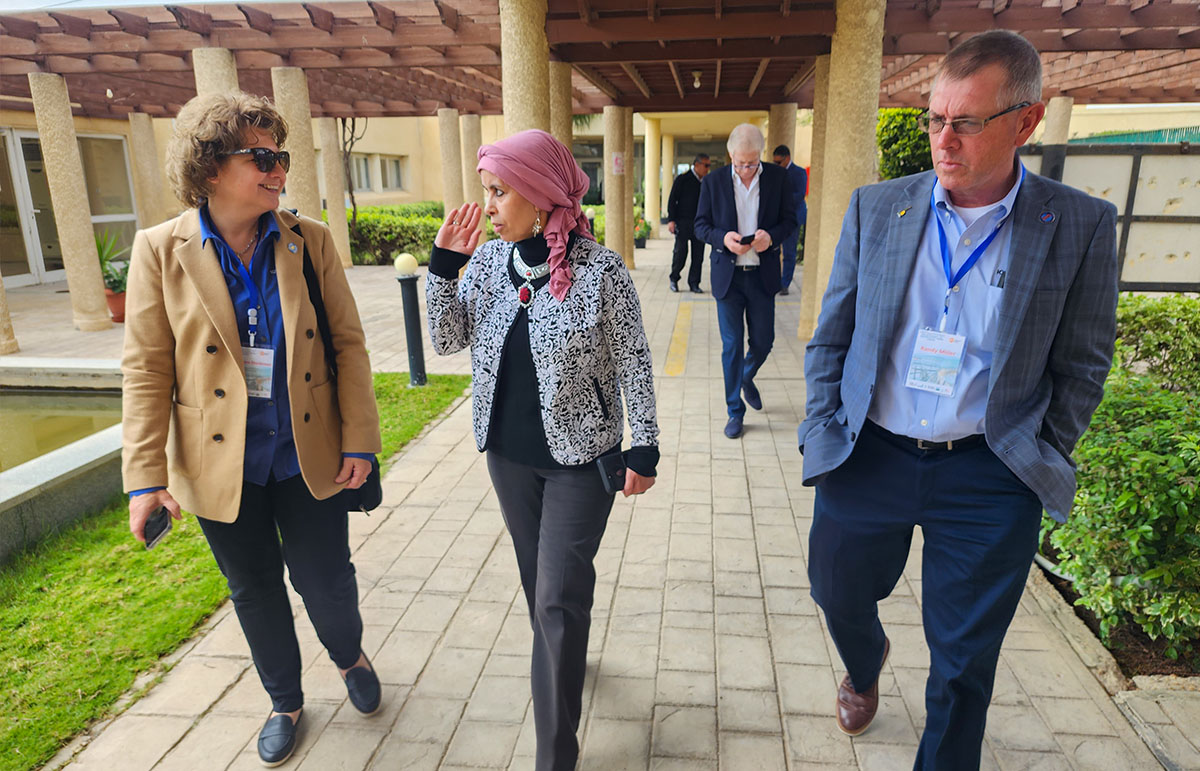
“You can tell by the smiles on their faces and recognition of their peers that it’s a big deal,” Miller says. “These are skills that will serve them well and help people eat better.
“And when people want to eat better, they look to protein, which bodes well for soy.”
Professional training
USSEC launched Soy Excellence Centers in 2019 in the Middle East and North Africa, South Asia, Sub-Saharan Africa and the Americas. The centers offer professional training certification and career advancement to participants in a variety of curriculums, including feed milling, soybean processing and refining, and poultry, dairy, swine and fish production.
More than 6,500 trainees have participated in SECs, including nearly 1,000 in 51 of Africa’s 53 countries.
World Fish, an international non-profit research and innovation organization established in 1975, serves as an SEC host. It’s funded by the United Nations, international donors, and U.S. and other food aid organizations to reduce hunger, malnutrition and poverty across Africa, Asia and the Pacific.
Its Egyptian production and training facility, located a short drive northeast of Cairo, has operated for almost 25 years. The freshwater facility fed by the Nile River transitions fish from hatchlings to a product that’s ready for market.
In addition to traditional ponds, it utilizes inland pond raceway systems (IPRS). Developed more than a decade ago with support from ISA and soybean checkoff, IPRS results in more efficient feed conversion and reduced labor, water usage, and mortalities. It’s also a more sustainable system than traditional pond fish farms as it recycles water, converts fish waste into fertilizer and requires less land.
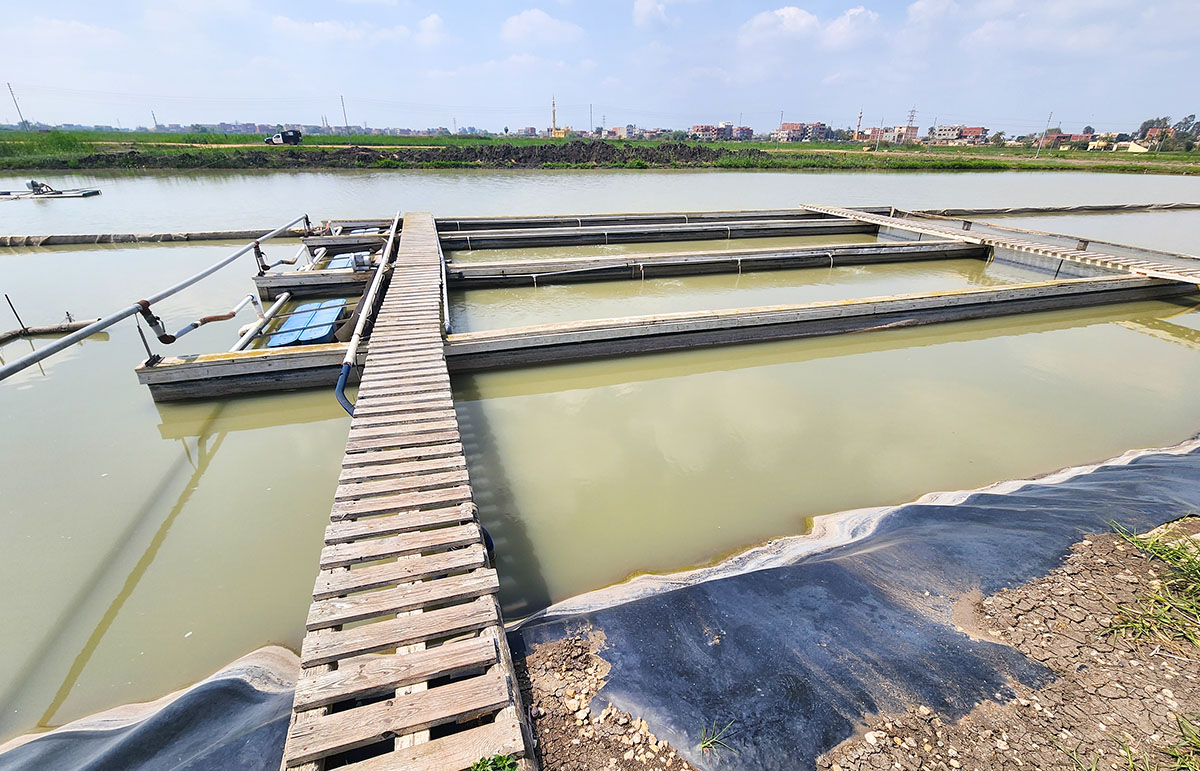
As one of just a handful of freshwater production systems globally, the Egyptian facility boasts 160 ponds and serves as a training center for aspiring and mid-level aquaculture professionals, including farmers, business employees and members of academia.
Real-life training
Each SEC involves up to 40 participants. The week-long curriculum hosted at the World Fish facility provides training on all aspects of fish production, including water quality, proper feeding, and nutrition and pond management.
“When you’re talking about real training, you are talking about World Fish,” says Dr. Ahmed Nasr-Allah, country director for the organization who oversees the 600-hectare facility near Cairo.
Metric tonnage of farm-raised fish production in Egypt has increased from 600,000 in 2005 to nearly 1.5 million in 2019. Production is projected to surpass 2 million metric tons (MMT) by 2030.
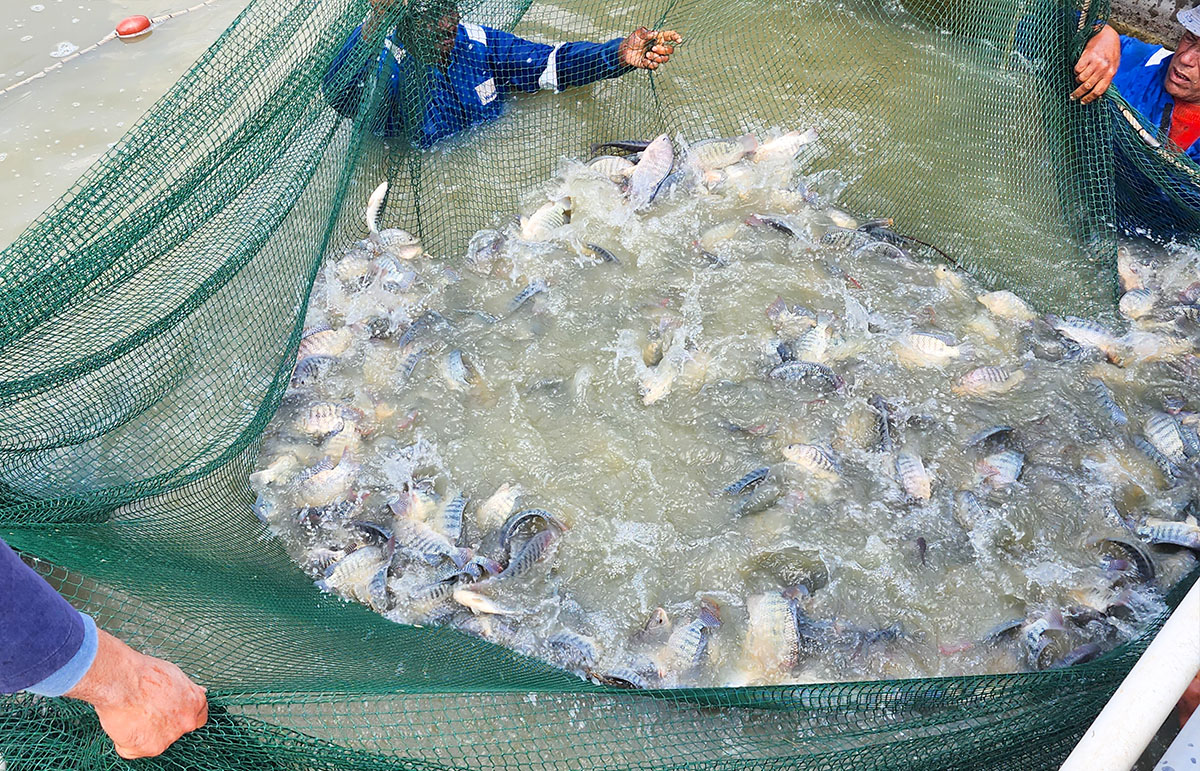
Farm-raised fish account for almost 80% of Egypt’s seafood market, up from 50% in 2012. Tilapia is the choice of 80% of Egyptians. Others include catfish, sea bass, mullet and carp. Shrimp production is gaining in popularity as farmers seek to diversify and capture greater premiums and profits.
“The results of better technology, feed, water and training are evident,” says Nasr-Allah.
Proof point: per-acre fish production has increased from 400 kilograms to 2 tons since 2019.
“This is the result of USSEC, investments from U.S. soy farmers and World Fish, and everyone agrees on this,” Nasr-Allah says.
Efficient and more sustainable farming methods require better feed.
In 2006, the country converted from fish meal to soybean meal as the primary feed ingredient. Soybeans are a valuable component of professional fish feed rations. U.S. soybean farmers supply more than 80% of Egypt’s demand for the oilseed, including a 95% market share of Egyptian fish feed. Whole soybeans account for roughly 92% of the country’s U.S. soy imports.
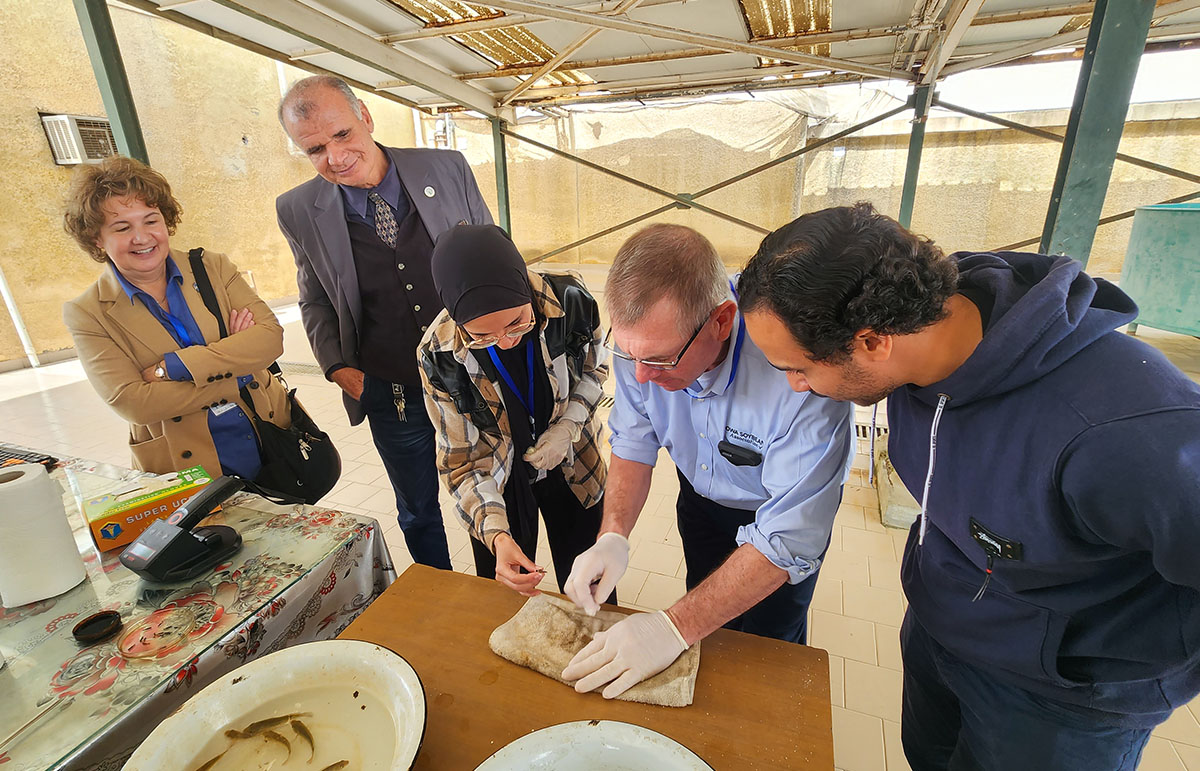
Soybean checkoff investments made by U.S. farmers in protein production systems and training in developing countries like Egypt are a win-win, says Miller.
“They create relationships and build trust with those on the front lines of producing food, from the buyers and processors of soy to the farmers and their employees.
“And they generate demand for U.S. soy, helping diversify the mix of countries that buy our product,” added Miller, who farms near Lacona in south central Iowa.
ISA CEO Kirk Leeds joined Miller and Shirbroun for the trade mission to Egypt. They networked with buyers and processors of U.S. soy, Egyptian farm association leaders, University of Cairo ag faculty and business leaders. They also visited protein production and processing facilities, including World Fish.
Wise decision
Soybean farmers are responsible for investing every checkoff dollar, Shirbroun says. Facilities like World Fish and training initiatives like USSEC’s Soy Excellence Centers are prime examples of making wise funding decisions.
“Seeing is believing,” says Shirbroun, who operates a farm and seed business near Farmersburg in northeast Iowa. “Seeing fish production double and triple along with a country’s import of U.S. soy demonstrate the value of investing in the people of Egypt.”
Iowa and U.S. soybean farmers need countries like Egypt, said Leeds.
“Despite economic headwinds being experienced by the Egyptians — and everyone globally, for that matter — it’s important to be here,” he says. “It’s about the long term and continually assuring our customers and friends that the U.S. soybean farmer is committed to being their supplier.”
While Egyptian imports of raw commodities like soybeans and corn are struggling due to rapid global inflation and devaluation of the country’s currency, it’s only a matter of time until its economic fortunes turn.
“Time devoted to knowing the Egyptian people, their struggles and aspirations and helping them farm better generates loyalty and ensures U.S. soy remains top of mind,” Leeds added.
“They will buy again when the global and Egyptian economies turn around. We want to make sure that when it does, our market share is retained and increased.”
Back